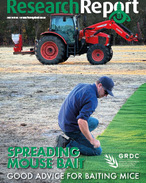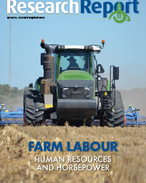This article is 8 years old. Images might not display.
Good levels of stored summer soil moisture have been topped up by autumn rains on the south-east coast and Lakes District, enabling grain growers to optimise yields with additional fertiliser.
However, some parts of the northern and north-eastern agricultural region have received less than 10 millimetres of rain since the start of April and areas in the lower Great Southern are also experiencing well below average rainfall for this period.
Duncan Young farms at Beverley and York and is president of the WA Farmers grains section.
He told Farming Ahead for those growers who got summer rain followed by mid-April falls, allowing them to start seeding, conditions are looking good.
“However, in areas which missed out on receiving as much summer rain and didn’t get good April or May falls, it’s a totally different situation,” Mr Young reports.
“For them it’s a lot drier, with staggered germinations out of the ground, but things could all turn around with a rain in the next week or two.
“I think most farmers affected by the patchy start to the season have adjusted their seeding programs to match, I certainly reduced my canola program just because of variable moisture and certainly other programs to the north have been adjusted to some extent.”
Mr Young believes most WA farmers are used to the variation the industry can experience, and will respond as needed.
“Many farmers would be holding off on nitrogen applications, depending on where they are, if it’s a dry area they’ll look at their potential yield and the benefit of putting that nitrogen on and adjust their rates accordingly,” he says.
“There’s been quite a few seasons in the past when we’ve had patchy, or late, starts and they’ve ended up being very good seasons, all you need is rain at the critical times and you can grow a crop.”
Department of Agriculture and Food veterinary officer Danny Roberts said with below average winter and spring rainfall predicted for most of the agricultural region of Western Australia, feed budgeting for livestock would be crucial.
“Most livestock producers are currently supplementary feeding, due to low levels of paddock feed and slow pasture growth,” Dr Roberts said.
“Past soil moisture levels have little bearing on current pasture growth rates and producers should consult tools like Pastures from Space to assess growth rates.
“Producers will need to work out what paddock feed they have now and the condition they want their stock to be in a month’s time to determine the amount of supplementary feeding required. This process may have to be repeated time and time again.”
Dr Roberts said livestock producers should consider stocking levels and marketing options to respond to seasonal conditions.
For more information about sheep feed budgeting click HERE and search for ‘sheep supplementary feeding’. The department also has a suite of decision making aids on the website, which can be found under the ‘crops’ tab.
The department’s Seasonal Statistical Forecast will be updated and available mid-June and is available for free on its website.























